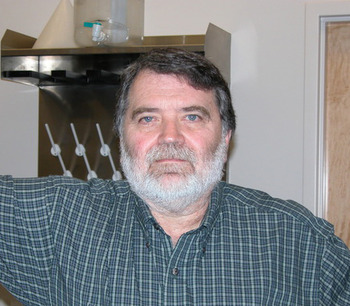
Billy Brazelton
Post-Doctoral Researcher
Hydrothermal vent microbiology including genomics and ecology, particularly the methanogens of the Lost City Hydrothermal Field
Exploring environments on Earth that can serve as useful analogs for possible habitats on Mars and other extraterrestrial planets is one important facet of Astrobiology. I work with an interdisciplinary team of scientists studying the Lost City Hydrothermal Field on the Mid-Atlantic Ridge. The microbial communities of this system are supported by exothermic geochemical reactions that occur when seawater and mantle rocks interact. We know that Mars has the necessary minerals and water for this reaction to take place, so the possibility of a Lost City-type system on Mars is an intriguing and exciting possibility.
The Lost City, discovered in 2000, represents a new kind of hydrothermal system. Unlike black smoker vents, which depend on magmatic and volcanic processes, the Lost City is driven by the exothermic geochemical reaction known as serpentinization that occurs when seawater interacts with the mineral olivine, an abundant component of Earth's mantle. The energy generated by this reaction drives hydrothermal circulation and results in the precipitation of incredibly tall (up to 60 m), ghostly white carbonate chimneys.
I am exploring the microbial communities that are supported by the serpentinization reactions at Lost City. The fluids venting from these chimneys have high concentations of dissolved hydrogen and methane gas as a result of serpentinization. We have identified biofilms containing a single phylotoype of methane-metabolizing Archaea that dominate the microbial community of the carbonate chimneys. My project focuses on these Archaea and explores their ecology, evolution, and role in methane cycling. For example, we are not yet certain whether the microbial communities are methane-producing or methane-consuming or both.
The discovery of the Lost City raises important astrobiological questions. What is the likelihood that such a system exists on Mars? Can we infer the presence or absence of life by measuring methane? What are the conditions necessary to support a methane-cycling ecosystem? Can a serpentinization-driven ecoystem support itself without an oxygenated ocean or atmosphere? How did the microbial communities of these ecosystems evolve? Exploring Lost City offers us an exciting opportunity to begin answering these questions in preparation for exploring possible extraterrestrial habitats.








